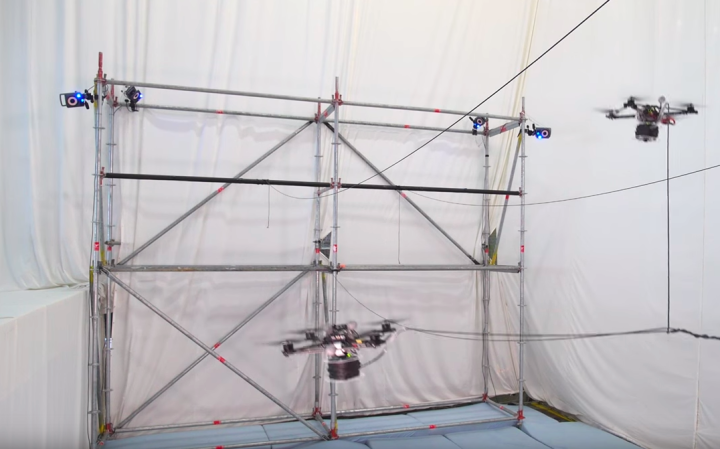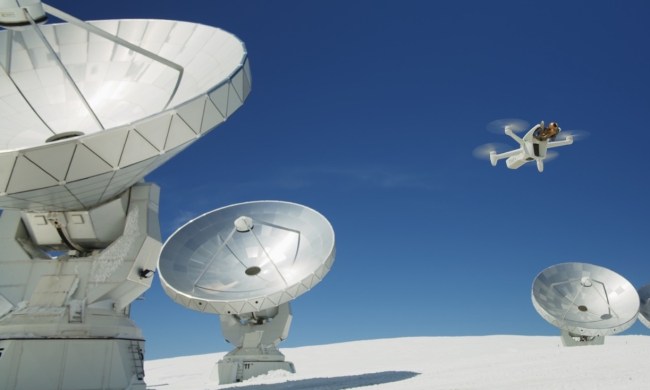
In a snazzy new video filmed at RTH Zurich Flying Machine Arena in Switzerland, quadrocopters are shown flying around and putting together a reputedly very sturdy rope bridge that could support the weight of a human being. According to the video description, each and every component of the 24 foot long bridge was “entirely realized by flying machines,” so just think of that the next time you want to punch the machine creating that annoying buzzing sound in the face.
“Flying machines offer a number of advantages compared to traditional construction machines,” the Institute for Dynamic Systems and Control noted in its related statement, “Flying machines offer a number of advantages compared to traditional construction machines. Specifically, they can reach any point in space and fly in or around existing objects.”
Still, the drones couldn’t do everything entirely by themselves, and relied on “a motion capture system that provide[d] vehicle position and altitude measurements for the small custom quadrocopters.” The system was in turn connected to a computer whose algorithms sent instructions to the drones on where to move and what to tie.
As Robohub explained, “Before construction begins, the location of the scaffolding is measured and input to the system. Once the anchor point locations for the rope are known, all the connections and links of the bridge’s primary and bracing sections are — without human intervention — autonomously woven and secured into place by the quadrocopters, which are each equipped with a motorized spool that allows them to control the tension of the rope.”
Once the bridge was fully formed, researchers put their mouths where their money was, and (successfully) walked across the structure. As exciting as this latest application of drones is, researchers note that it serves merely as a demonstration of the full capabilities of unmanned flying objects. The bridge, scientists say, shows “for the first time that small flying machines are capable of autonomously realizing load-bearing structures at full-scale and proceeding a step further towards real-world scenarios.”
The Gramazio Kohler Research team, which was involved in the bridge building process, pointed out on their website that, “The [drone] machines can move in and around existing objects and perform construction tasks that are not limited by the same constraints as ground-based machines. As a result, their use opens up new questions in materializing architecture.” The possibilities, the team says, are effectively endless, and extend to “the possibility of building spatial load-bearing structures that are not possible with standard robotic systems.”
So who knows what the future holds, friends. If this work continues, it just may be bridges in the sky built by drones.


